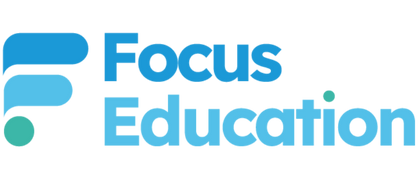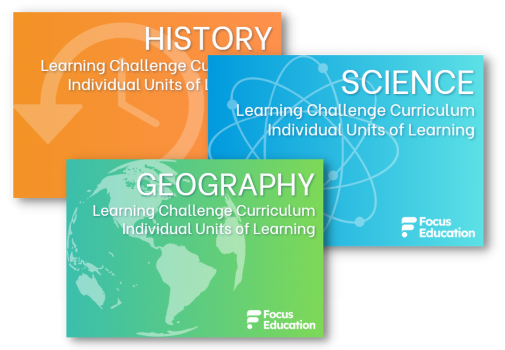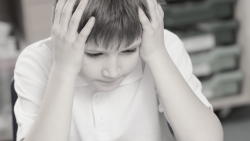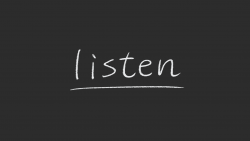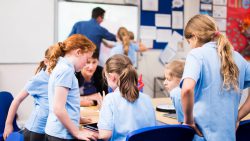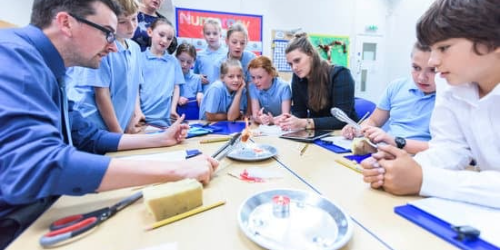
As I scanned my news app this morning, I was not surprised to see that a large proportion of articles were in some way related back to science – from the sunny weather boosting clothing sales and Amazon helping NASA return to the moon, to endangered komodo dragons being hatched in a zoo and an underwater volcano triggering lightning. The news is also immersed in stories about climate change, a subject which will have a direct impact on the lives of every pupil currently in our primary education system. Getting the teaching of our primary school science curriculum front and centre has never been more important or timely. We need our children to be actively seeking out scientific knowledge and understanding – harnessing the power of enquiry and problem solving, combined with a thirst for learning about new ideas and the resilience to innovatively solve any new problems that arise in their outward facing future world.
The New York Academy of Sciences actively promotes the development of scientific innovation in students with a project that ‘teaches students how to solve challenges facing their communities—and communities around the world—by applying principles of scientific research and design thinking…. with engaging ways for students to build STEM knowledge, as well as 21st-century skills like critical thinking, creativity, collaboration, and communication.’
Ofsted recognise that while there is a rise in the number of pupils taking science, we are not keeping up with our international counterparts in terms of outcome by the time they leave school. EEF described the attainment gap in science as pervasive back in 2018 and much has happened since then to further derail long term outcomes. This may be linked to the shifting status of science in our primary school for a number of reasons. While it remains a core subject many schools have shaved, trimmed and in some exceptional cases marginalised the subject to tokenistic themed events for a variety of reasons including the immense pressure on English and Maths outcomes, staff and subject leader confidence, resourcing constraints, pandemic catch-up and time.
But why?
I love a young child’s bright fiery mind and the twinkle in their eyes when they ask you another question so you can explain something in more and more detail to them. A conversation about what colour a flower is can very quickly become a complex explanation into the attraction of bees to brightly coloured flowers and the importance of pollination even before they enter school, because they never feel satiated by the answers you give.
We want to harness this love of knowledge and enquiry so that it becomes a deep-rooted part of a child’s identity throughout their school life, and this happens when our passionate science teachers hook their children with engaging, challenging and exciting lessons.
The core elements of a science curriculum can be quite easily pulled together as a series of questions to keep the overarching structure really simple:
The WHAT?
- Let’s be clear – the national curriculum should be our foundation for all science teaching and curriculum building.
- EYFS and primary science curriculum are merely chapters in a bigger book that can end for some at university. F. James Rutherford described it as, ‘the topics making up a science lesson ought to connect with one another to tell a story with a beginning, middle and end and these lessons or chapters making up a science unit should connect to tell a complete (coherent) story.’
The WHY?
- Our children deserve an education that gives them the tools to solve the challenges of the future, being armed with a clear understanding of how their world is constructed and changing over time.
- Following the pandemic, it has become increasingly clear that lost learning and reduced engagement is vast. Our teachers need to be delivering the most engaging and vibrant curriculum they can, to increase motivation and close any gaps that have appeared
The HOW?
Linking Learning
- Linking learning should be an ongoing process within the teaching cycle with initial connections to:
- Linking to prior learning in the early years and primary teaching cycle
- Linking each strand of science to the child’s real life
- Linking to the outside world of work
- Linking to the news – what stories are happening in their world linked to the science curriculum?
- Linking to the outside world of climate change
Component Knowledge
- Learning should be the careful intertwining of the component pieces of substantive and disciplinary knowledge.
- Definition check:
- substantive knowledge are the facts of science
- disciplinary knowledge are the practices of science – working scientifically
- Key Concepts – variables, validity, design, reporting
- Enquiry Types – comparative and fair testing, pattern seeking, grouping and classifying, observations over time, research using secondary sources
- We should not underestimate mastery of disciplinary knowledge and skills over learning facts and being assessed on them. Interwoven opportunities to develop and layer a pupils’ understanding of how to work scientifically is crucial to the overarching progression of a child’s learning in science.
We should ensure that the progression mapping of disciplinary knowledge is precise and well planned. Great science lessons seek to bind sticky knowledge together with pattern seeking opportunities at all levels, between the lesson and the world, between the lesson and prior learning, between the observations within an investigation.
Retrieval Opportunities
- Learning should be the careful intertwining of the component pieces of substantive and disciplinary knowledge.
- Definition check:
- substantive knowledge are the facts of science
- disciplinary knowledge are the practices of science – working scientifically
- Key Concepts – variables, validity, design, reporting
- Enquiry Types – comparative and fair testing, pattern seeking, grouping and classifying, observations over time, research using secondary sources
- We should not underestimate mastery of disciplinary knowledge and skills over learning facts and being assessed on them. Interwoven opportunities to develop and layer a pupils’ understanding of how to work scientifically is crucial to the overarching progression of a child’s learning in science.
We should ensure that the progression mapping of disciplinary knowledge is precise and well planned. Great science lessons seek to bind sticky knowledge together with pattern seeking opportunities at all levels, between the lesson and the world, between the lesson and prior learning, between the observations within an investigation.
Vocabulary Chains
There is much written about the teaching of vocabulary and its subsequent influence on overall learning. My view is that all vocabulary should be carefully chosen, sequenced through the school, with age appropriate definitions provided for each word, that are understood and used by all adults across all aspects of learning. The revisiting of these words in a spiral creates a myriad of opportunities for knowledge to be transferred and revisited in multiple situations. The precision in the selection and definition reduces any opportunities for misconceptions to be sown.
Power of Transference
Without undermining the integrity of discrete science there are so many opportunities to apply scientific substantive and disciplinary knowledge across the whole curriculum be it in Music, History, Geography or Maths and English without being tokenistic. We have a real opportunity here to galvanise thinking around science being the glue in a ‘whole world’ curriculum.
The WHEN
While there are no set timings for the delivery of the national curriculum, due deference should be given to the status of the subject (core), the scale of the curriculum (how much there is to teach) and the principles behind effective learning processes, understanding of working memory and cognitive overload (opportunities to retain and recall information dwindle when the gap between opportunities widens). My view is science should account for the equivalent of two hours a week.
Cautionary Footnote
I have seen many examples of lessons over the last decade where children ‘appear’ to be completing a practical, enquiry based science lesson. When planning learning opportunities for pupils, ensure that the foundations of the lesson are underpinned by the following:
- What specific piece of substantive knowledge do you want the children to find out about?
- What specific piece of disciplinary knowledge you want the children to revisit and develop?
- What opportunities are offered to help children evaluate and document their findings independently?
Buyer Beware
Sometimes we find value in creative experimental science days. Make sure the resources and ideas you deliver, accurately reflect the scientific understanding the children require, e.g. How does a volcano really erupt? Can we create this scientifically in a classroom?
In Conclusion
I want to start a hashtag #butwhyprimaryscience to actively promote pupil’s continuation of a, ‘But why?’ mindset into adulthood. Let’s give them the tools and skills to never stop enquiring, questioning and problem solving to ensure their future world remains a place of curiosity, awe, wonder and beauty but they have the skills to innovate and solve the problems that may arise.

Are you looking for support with your science curriculum?
Follow the link below to review what the Learning Challenge can offer your school: https://www.learningchallengecurriculum.com

